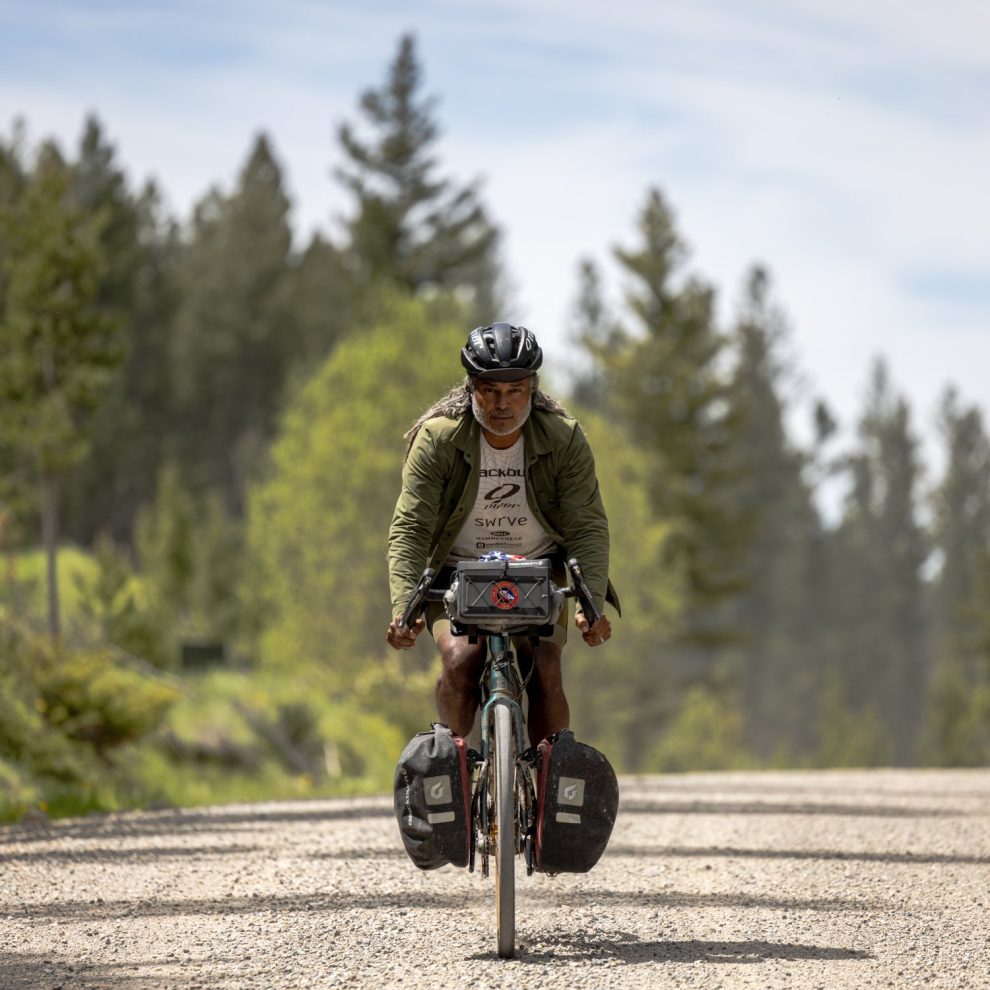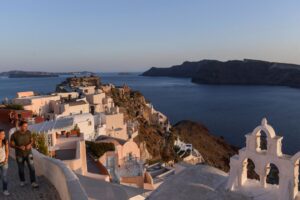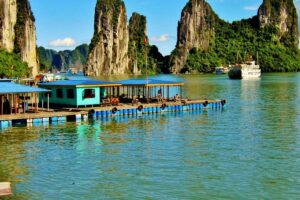Following the historical route of the Black soldiers who bikepacked across the American West in 1897, he realized how strong they were—and how strong he is
Erick Cedeño shared his story with producer Shweta Watwe for an episode of The Daily Rally podcast. It was edited for length and clarity.
I was on a gravel road—hot, dirt was in my face, in my body. It’s 105 degrees. In a way it was beautiful to be out there because I haven’t seen any cars. But I’m thirsty, I was hungry. I’m in a place that I’m outside my comfort zone.
My full name is Erick Cedeño. On social media, people know me as the Bicycle Nomad. I live in Santa Monica, California. I’m an outdoors professional, I’m an explorer, and a full-time dad.
About 14 years ago, I decided I wanted to see the U.S. by bicycle. I wanted to see the landscape. I wanted to meet different people from different towns, wake up in different places every morning. I have done that in every single state except Alaska. On the last expedition that I just completed I went from Missoula, Montana, to St. Louis, Missouri. I was retracing the expedition of the 1897 Bicycle Corps. In 1897, the Army was testing the bicycle to see if they could use it as a method of transportation. So they recruited 20 Black soldiers to do this expedition. The whole trip was 1,900 miles.
I knew about this story over 12 years ago, but six years ago I went deep into learning more about each of the riders, learning about the historical route, learning about the bicycles that they rode. This expedition in 1897 was taken because of the diverse landscape and the climate. So when I started in Missoula, it was about 44 degrees. Three weeks later, I was in Nebraska and it was 105 degrees. Also, the gravel roads of Montana, Wyoming, South Dakota, Nebraska, and Missouri—they’re so diverse.
These guys in 1897 were bikepacking on single-speeds, and I wanted the world to know because they were not given the dignity that they deserved while they were alive. And I wanted to retrace as close as possible that historical route because I wanted to see what they went through and the challenges that they encountered. And I encountered similar challenges. One in particular was the landscape. I was in the backcountry of Nebraska, and up until that point I’d done Montana, Wyoming, South Dakota, and Nebraska. I knew that if I could push through, I could get onto the next side, which was Missouri, and then I was in St. Louis.
This is the Sandhills of Nebraska, which was the toughest part of the 1897 expedition. There were a few farms, and a few tractors were passing through. There were some corn fields, and it was 105 degrees. Water was really hard to find. I would travel sometimes an hour without drinking water. I had to drink my saliva. And I remember just sipping little by little. The sun was coming down and I was still about 30 miles from my destination. And I knew that I was gonna be traveling at night. I was thirsty, I was hungry. I thought that I wanted to quit.
I started thinking about why I was doing this trip. I wanted to pay homage to the 1897 expedition of the Bicycle Corps, and I also wanted to tell their story. What kept me pushing through that pain of being thirsty, hungry, physically tired was that I knew that they didn’t quit, so how could I quit?
Not until I got out there and realized the routes that they were traveling did I see how strong those guys were. I also learned a lot about myself. I know how strong I am and I never knew that until this expedition. That’s pretty cool to know that I could push through. I just had to breathe. And I’m like, I’ve been here before. Maybe not the physical space, but I’ve been through challenges that have pushed me to get to where I was. And I just told myself, I’ve been here before.
I always tell people that traveling by bicycle teaches you to be comfortable outside your comfort zone. And that’s always in my head, always being comfortable outside your comfort zone. There’s always gonna be challenges, but those moments shape you to get to the other side. And the other side is where the magic happens.
Erick Cedeño is a professional explorer who travels by bicycle. His bikepacking trip along the historic route that the 25th Infantry Buffalo Soldiers took in 1897 is documented in the short film Truth and Dignity. You can find him on Instagram @bicyclenomad, where he shares his many adventures.
Source: Outside Online



























